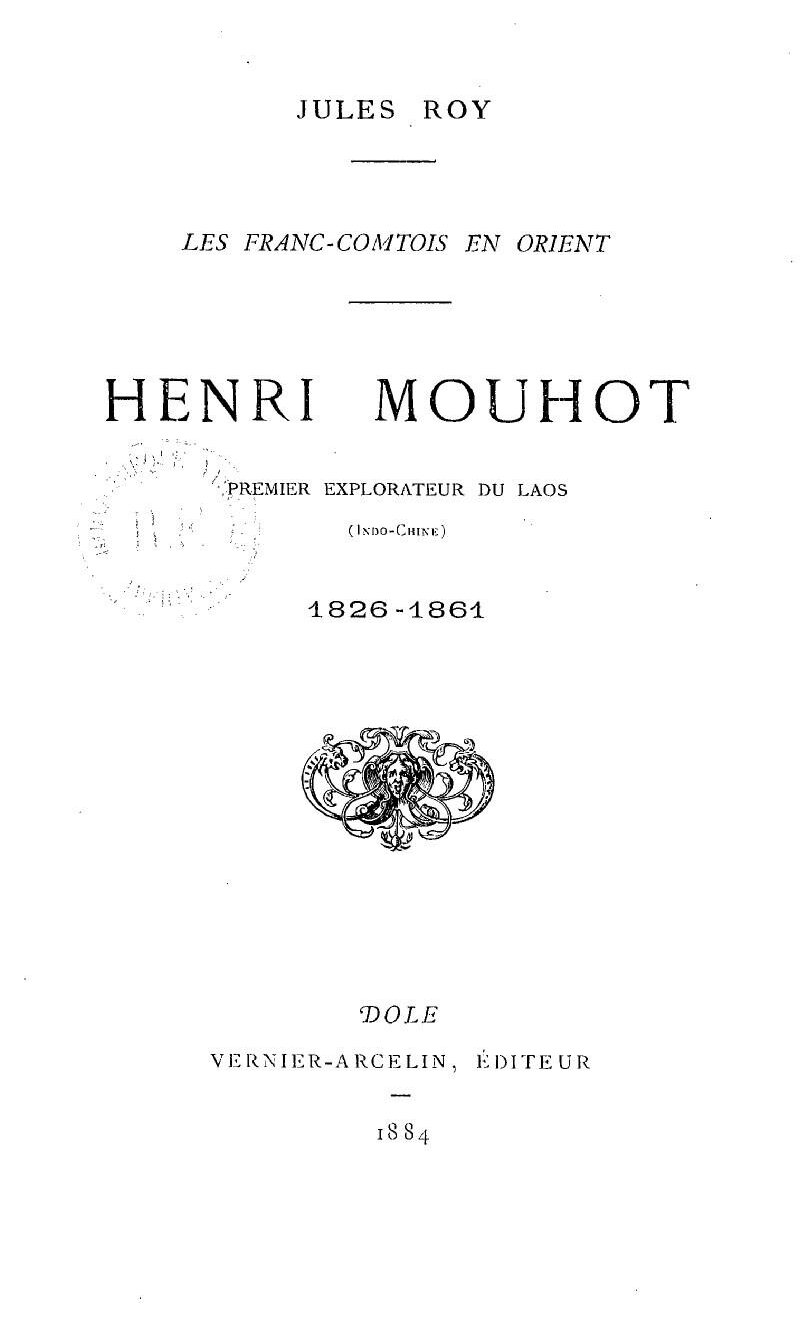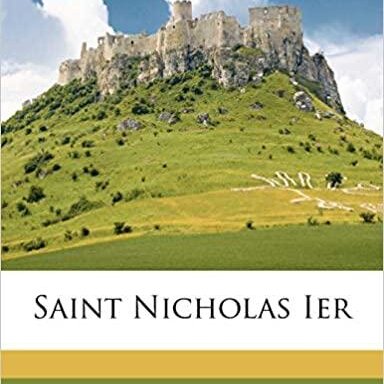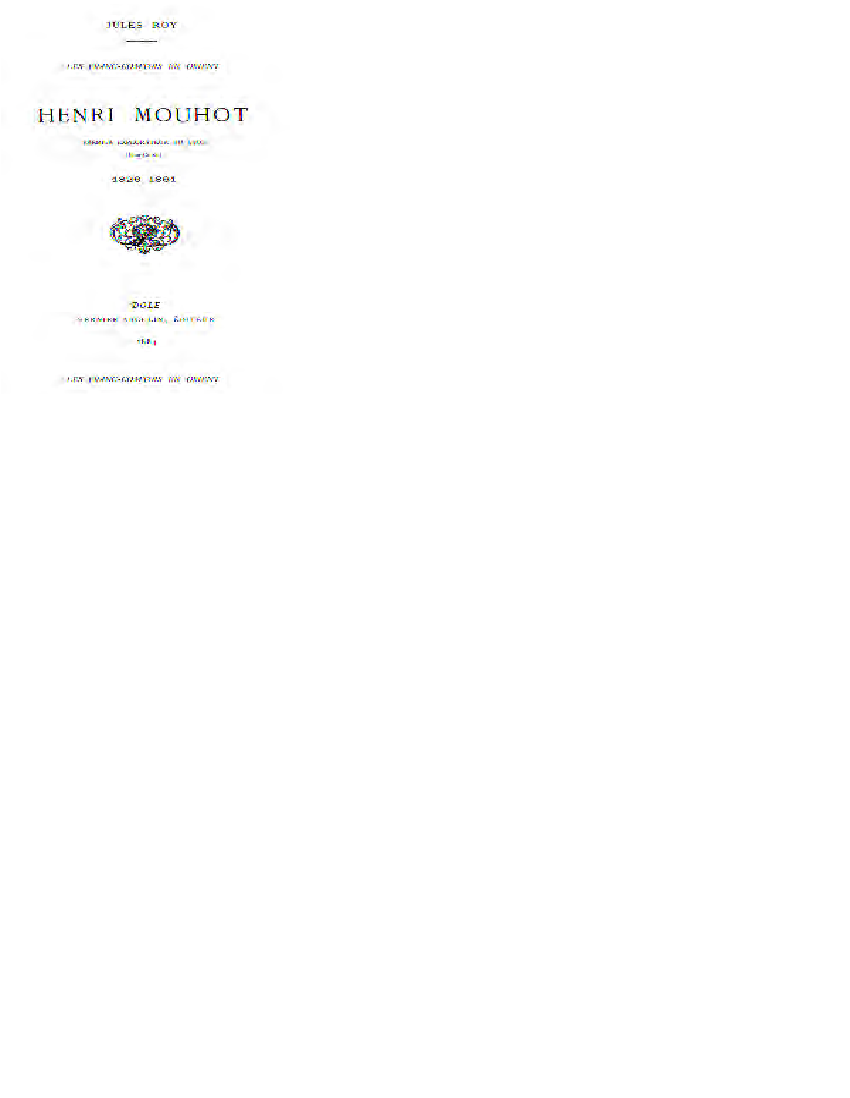Henri Mouhot, premier explorateur du Laos (1826-1861)
by Jules Roy
A documented profile of the later-acclaimed explorer, who had died in Laos and whose fame had not been yet established.

- Format
- e-book
- Publisher
- Vernier-Arcelin, Dole (Franche-Comté, France) | 'Les Franc-Comtois en Orient'
- Edition
- digital version of the original edition
- Published
- 1884
- Author
- Jules Roy
- Pages
- 31
- Language
- French
pdf 356.6 KB
A friend of Charles, Henri Mouhot’s brother, and with roots in the same region of Franche than the Mouhot family (the Franche-Comté, lower northeast), the author gives us here an interesting — and quite impartial, since he was above all an historian not directly involved in Southeast Asia — portrait of the adventurous naturalist. Among his many insights, we shall retain:
- The English edition of Mouhot’s Travels as a trigger for the rush to Angkor: “Quand une main amie eut recueilli et publié à Londres les notes de Henri Mouhot, l’amiral de la Grandière, gouverneur de la Cochinchine, né put résister au désir de voir les merveilles qu’il avait décrites ; il se rendit à Ongkor et visita les ruines en détail, et son admiration fut telle qu’il n’hésita pas à les déclarer supérieures à tout ce que l’on peut voir de semblable en Europe. Une pareille déclaration était comme un appel auquel s’empressèrent de répondre plusieurs nations : la France envoya MM. Durand et Rondet, qui dessinèrent les principaux motifs d’ornementation ; les Anglais Kennedy, King et Thomson allèrent prendre de nombreuses vues des monuments ; l’Allemagne à son tour envoya le docteur Bastian. Enfin le gouvernement français institua une commission spécialement chargée de reconnaître la vallée supérieure du Mékong.” [“When a friendly hand had collected and published Henri Mouhot’s notes in London, Admiral de la Grandière, Governor of Cochinchina, could not resist the desire to see the marvels he had described; he went to Ongkor and visited the ruins in detail, and his admiration was such that he did not hesitate to declare them superior to anything similar that can be seen in Europe. nations: France sent Messrs. Durand and Rondet, who designed the main ornamental motifs; the English Kennedy, King and Thomson went to take many views of the monuments; Germany in turn sent Dr. Bastian. Finally, the French government set up a commission specially charged with surveying the upper valley of the Mekong.
- Colonialism and archaelogy: ‘Le capitaine de frégate Doudart de Lagrée fut mis à la tête de l’expédition; deux lieutenants de vaisseau, Francis Garnier et L. Delaporte, l’accompagnèrent ; les docteurs Thorel et Joubert, médecins de la marine, et le vicomte de Carné, délégué du ministre des affaires étrangères, se joignirent à ces trois officiers. Il sortit de tout ce mouvement une série de descriptions qui confirmèrent celle que Henri Mouhot avait eu le mérite de donner le premier ; les commissaires français firent aussi une collection d’un grand nombre de moulages et de bas-reliefs, de frontons, de chapiteaux, de piliers, de pilastres et d’inscriptions, de dessins, de photographies, d’aquarelles et d’esquisses ; ils rapportèrent 70 pièces de sculpture, d’architecture, et 34 panneaux se faisant suite. Cette collection d’antiquités Khmers, qui appartient à la France, est unique au monde. Rien né cause plus de surprise que ces oeuvres d’art venues d’un pays barbare et dénotant, dans le passé de l’Indo-Chine, une civilisation et une puissance de génie qui semblent s’être surpassées, afin de confondre l’imagination des générations futures. Mais en contemplant, il y a quelques années, au palais de Compiègne, ces ruines imposantes du lointain et glorieux passé d’un peuple qui n’est plus, j’éprouvais un sentiment pénible à la pensée que le nom du savant à qui nous devons ces découvertes, était un franc-comtois à peine connu de quelques amis.’ [Navy Captain Doudart de Lagrée was placed at the head of the expedition; two naval lieutenants, Francis Garnier and L. Delaporte, accompanied him; Doctors Thorel and Joubert, naval doctors, and the Viscount de Carné, delegate of the Minister for Foreign Affairs, joined these three officers. Out of all this movement emerged a series of descriptions which confirmed the one that Henri Mouhot had had the merit of giving first; the French commissioners also made a collection of a large number of moldings and bas-reliefs, pediments, capitals, pillars, pilasters and inscriptions, drawings, photographs, watercolors and sketches; they brought back 70 pieces of sculpture, architecture, and 34 consecutive panels. This collection of Khmer antiquities, which belongs to France, is unique in the world. Nothing causes more surprise than these works of art coming from a barbarous country and denoting, in the past of Indo-China, a civilization and a power of genius which seem to have surpassed themselves, in order to confuse the imagination of future generations. But contemplating, a few years ago, in the palace of Compiègne, these imposing ruins of the distant and glorious past of a people who are no more, I experienced a painful feeling at the thought that the name of the scientist to whom we owe these discoveries, was a Franc-Comtois only known to a few friends.’
- King Ang Duong at the Udong palace: “Le roi attendait [Mouhot] en fumant un bouri, et dès qu’il entra, il lui tendit la main en souriant, et le pria de prendre place et de commencer son repas ; selon l’usage du pays, il voulait honorer son invité en assistant au repas sans y prendre part lui-même. Le dîner se composa de poulet, de canard et de poisson exquis; on servit aussi des gelées et des fruits confits, des bananes, des mangues, puis le thé que le roi prit avec Mouhot en lui offrant un cigare de Manille. Enfin un page plaça une boîte à musique sur la table, et le premier air qui en sortit fut la Marseillaise; le second, l’Air des Girondins.’ [“The king was waiting for [Mouhot] while smoking a bouri, and as soon as he entered, he held out his hand to him, smiling, and asked him to take his place and started his meal; according to the custom of the country, he wanted to honor his invited by attending the meal without taking part in it himself. The dinner consisted of chicken, duck and exquisite fish; jellies and candied fruits were also served, bananas, mangoes, then the tea which the king took with Mouhot, offering him a Manila cigar. Finally, a page placed a music box on the table, and the first tune that came out was the Marseillaise; the second, the Air des Girondins.’]
- Tonle Sap: The author calls the Tonlé Sap Lake “la Méditerranée du Cambodge” [‘The Mediterranean Sea of Cambodia’].
- Three weeks in Angkor: “Après avoir séjourné trois semaines dans les murs d’Ongkor Wat pour dessiner et lever des plans, Henri Mouhot revint à Battambang, où il se mit en quête des moyens nécessaires pour le ramener à Bangkok ; mais sous différents prétextes, malgré l’aide du vice-roi, il fut retenu près de deux mois à Battambang avant de pouvoir s’éloigner de cette ville.” [“After spending three weeks within the walls of Ongkor Wat to draw and draw plans, Henri Mouhot returned to Battambang, where he set out to find the means necessary to bring him back to Bangkok; but under various pretexts, despite the help of the Viceroy, he was detained for nearly two months in Battambang before being able to leave this city.”]
- The inaccurate accounts of Mgr Pallegoix: “Le 25 juillet [1861], Henri Mouhot arriva à Luang Prabang, charmante petite ville qui, s’étendant sur un espace d’un mille carré, compte une population, non de 80 000 habitants, comme le dit Mgr Pallegoix dans son livre sur Siam, mais de sept à huit mille seulement. La situation est des plus agréables : les montagnes qui resserrent le Mékong forment une vallée circulaire et encadrent un tableau ravissant qui rappelle les beaux lacs de Côme et de Genève.” [“On July 25 [1861], Henri Mouhot arrived at Luang Prabang, a charming little town which, extending over an area of one square mile, has a population, not of 80,000 inhabitants, as Bishop Pallegoix says in his book on Siam, but only from seven to eight thousand. The situation is most pleasant: the mountains which constrict the Mekong form a circular valley and frame a delightful picture which recalls the beautiful lakes of Como and Geneva.”
Tags: archaeology, French explorers, Tonle Sap, Angkor Wat, colonization, naturalism, botanic, Lao, Siam, pre-colonial Cambodia
About the Author

Jules Roy
Jules Roy (30 Jan. 1844, Trépillots, France — 5 March 1914) was a French historian, a professor at Ecole des Chartes and Ecole pratique des Hautes Etudes (EPHE), and a close friend of Charles Mouhot, Henri Mouhot’s brother.
He published numerous historic essays, including L’An Mille (1878), Du role des prélats de Rome en Orient et Occident (1878), Turenne (1884) and Le pape Nicolas Ier (1900). He collaborated to the series “Les Franc-Comtois en Orient”, published in Dole (France) in the 1860s-1900s.
Note; in too many bibliographies, this author is confused with French writer, novelist and journalist Jules Roy (1907−2000).

